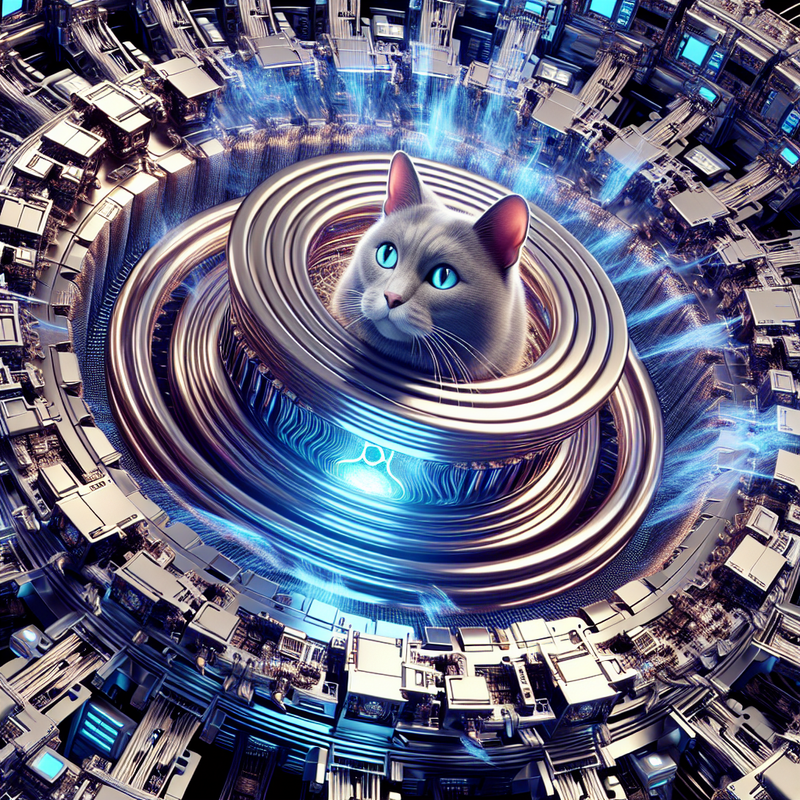A New Breakthrough in Quantum Computing Stability
In a leap forward for the field of quantum computing, a group of researchers has achieved a notable breakthrough by fashioning a qubit with an extraordinarily long duration of error-free operation time, enhancing the prospects for more stable quantum computers.
This innovative step, led by Zaki Leghtas of École Normale Supérieure and his colleagues, in partnership with quantum computing start-up Alice & Bob, concentrated on a qubit that draws inspiration from the well-known Schrödinger’s cat paradox.
Recognized Potential and Posed Challenges
Recognized for their potential to tackle intricate problems beyond the reach of traditional computers, quantum systems are, however, susceptible to errors, and thus, creating a quantum computer capable of self-error correction has posed a substantial challenge.
A Leap Forward in Quantum Computing
The research team’s remarkable progress entailed constructing a superconducting circuit that confines light uniquely, giving rise to an innovative qubit variant they referred to as a “cat qubit.” This cat qubit is capable of existing in two states at once, leading to a notable prevention of typical bit-flip errors – the accidental swapping of 0s and 1s – for an unprecedented duration of 10 seconds, which eclipses previous trials by a factor of 10,000.
Leghtas noted, “For more than a decade, physicists have theorized that cat qubits would be inherently immune to bit-flip errors. Translating this theory into experimental evidence has been a complex task.”
New Discovery and Further Potential
Initially, the team measured bit-flip errors in the cat qubit every few milliseconds. However, upon refining their measurement tactics, they realized many of these perceived errors were, in fact, artifacts of the measuring process. This led to the pivotal discovery in their experiment.
With the capability to generate additional cat qubits, it’s possible to significantly diminish the requisite number of qubits needed for error correction in quantum computers, potentially reducing the count by a factor of ten when compared to other superconducting qubit designs.
Intricate Considerations and Future Outlook
Nonetheless, as with any advancement in quantum computing, there are intricate considerations, such as the need to balance strong resistance to bit-flip errors while still managing susceptibility to different types of errors. This important balance was highlighted by Christian Andersen from the Delft University of Technology, who acknowledged the complexity: “This is indeed an exciting development, but we also face many hurdles ahead.”
The successful creation and integration of the cat qubit by Leghtas and his collaborators represent a significant stride towards achieving quantum computers that are much more dependable, bringing us a step closer to harnessing the full potential of quantum computing.

